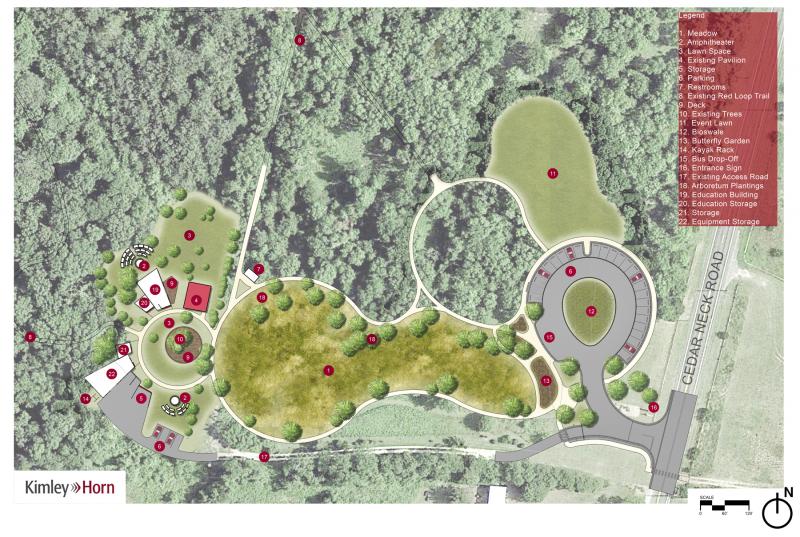Inland Bays center taking James Farm to next level
Twenty years ago, at the dawn of a new century, the summer’s predominant southwesterly winds blew piles of sea lettuce onto the narrow beaches at the northern end of Rehoboth Bay. Nature has a none-too-subtle way of telling us when the balance is upset. The rotting sea lettuce stunk; it hindered the efforts of clammers in the bay, and it devalued properties.
The shallow bays polluted by excessive nutrients created perfect conditions for the sea lettuce blooms. Now, 20 years later, through the efforts of county and state environmental managers, concerned individuals, and the Delaware Center for the Inland Bays, that problem has been reversed. Much of the nutrient loading has ceased, primarily because most wastewater treatment facilities – such as Rehoboth Beach – no longer dump their nutrient-rich effluent into the bays.
People have become more aware of their own impacts on the bays, less stormwater-laden runoff is making its way into our waterways, farmers have done a good job of managing their fertilizer applications, and Sussex County continues to expand its wastewater treatment network, leading to fewer septic systems.
It all adds up to environmental progress, and that’s good for the economy and a better quality of life for residents and visitors. Now, instead of a declining clamming industry in the bays, watermen are doing better, and an emerging aquaculture industry centered around oysters is gaining a foothold.
“We would be the biggest fools who ever lived if we didn’t improve the bays with all of our regulations and the money that has been spent,” said former Department of Natural Resources and Environmental Control Secretary John Hughes this week. “But the population continues to grow. There’s no environmental solution to too many people. No matter how careful, people have an impact. But we can’t say people can’t come here; we can’t say we can’t use the bays. We have to let people value them, but they can’t value them without familiarity. It just has to be the right kind of familiarity.”
Enter the Center
That’s where the Center for The Inland Bays enters the picture. According to Executive Director Chris Bason, a campaign is afoot to raise the dollars needed to make sorely needed improvements to the 150-acre James Farm property on Quillen’s Point in Indian River Bay. Mary Lighthipe donated the farm to Sussex County in the early 1990s to be conserved and used for environmental awareness. The county turned its management over to the center, and it has become a showcase for the natural beauty of the Inland Bays and continuing efforts to protect and improve their overall health.
“The preserve gets a lot of love,” said Bason recently. “We had 29,506 visitors in 2019. In 2020 that number grew to 36,990 as people increased their outdoor activities. Our goal is to translate that visitorship into stewardship for the bays. To that end, we want to have facilities that match the caliber of the coastal ecosystem represented here. In the years since taking over James Farm management in 1998, we’ve hosted more than 19,000 school students who have come to learn about the bays. We want to do more of that education for students and adults.”
Bason said the first phase of the campaign included major improvements to the farm’s trail system and parking area. That phase was completed in 2019.
The next phase of the campaign will move into high gear this spring with a goal of raising $850,000 for an education building, real restroom facilities, outdoor amphitheaters, and new maintenance facilities. “Our goal is to finish our campaign in 2021, continue making trail improvements, and have the new facilities ready for use in 2022,” said Bason.
Former Sussex County Councilman George Cole is serving as honorary chairman for the $850,000 campaign. “This is in my backyard on Cedar Neck Road, and I knew Mrs. Lighthipe,” said Cole. “It was my idea for the county to partner with the center, and they have been a terrific partner. Every different ecosystem on Delmarva is represented at the James Farm and the improvements plan is very strong. I don’t think there will be any problem raising the money needed.”
What does Bason see as the single most important accomplishment of the Center for the Inland Bays in its 30 years of existence?
“The No. 1 success is the remarkable improvements in water quality in the bays that have resulted from the partnerships that make up our organization. Reductions in nutrient pollution from all sources have decreased, resulting in much cleaner water in these ecological treasures,” answered Bason.
“The James Farm is a perfect example of a single project encompassing those partnerships: a property donated to Sussex County by a private individual is managed by the center with the support of its many volunteers for environmental protection, and through its relationship with a local school district, environmental education. Like our overall mission, it has been successful because people have worked together.”























































